Says Martin Salter in his recent Angling Trust ‘blog’ . . . .
“I love catching bass on lures. They are a great surface predator that hits hard and they are the nearest thing we’ve got in the UK to some of the warm water sportsfish that I have been lucky enough to tangle with in other parts of this wonderful planet of ours. However, catching these silver bullets of a decent size from the English shores has become increasingly challenging in recent years due to the abject failure of successive governments to implement a proper bass management plan that includes protection for juvenile fish and a sustainable minimum landing size.
For the last three years I’ve made an annual pilgrimage to the wonderful west coast of Ireland and on every occasion I’ve caught bass substantially larger than anything I’ve ever had from the shore back home. In fact the average size of Irish bass seems to be between four and five pounds compared to less than half of that in England. Now I’m not saying that there aren’t lunkers to be caught here in Blighty but the vast majority of the bigger bass come to those able to fish from a boat rather than from the rocks or the surf. This is not how our bass fishing should be and is why the Angling Trust will not rest until we have see these fantastic fish granted the protection they both deserve and need.
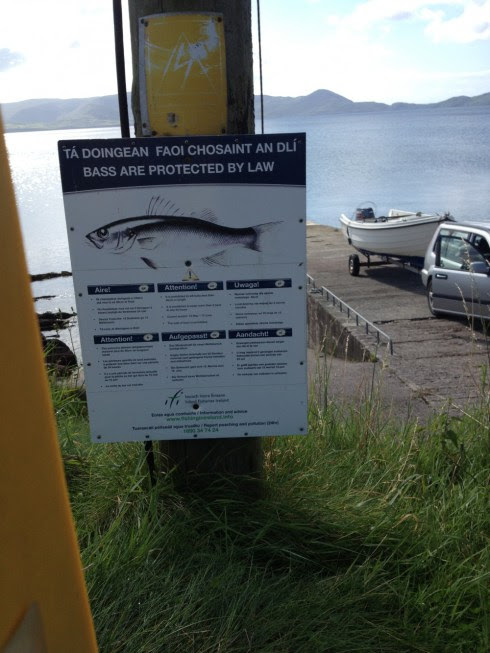
Heavenly Shores
Anyway, back in the land of mist, mountains, bass beaches and Guinness I found myself again heading along the Kerry shoreline with a sense of anticipation. Bass are now protected by law in the Emerald Isle and increasing numbers of visitors from all over Europe are spending considerable sums chasing trophy size specimens from the rocks and surf beaches of the south and west coasts of this beautiful country.
I had a couple of sessions organised with my friend Richard on the Dingle Peninsula before driving round to snatch a few days in the company Irish bass supremo John Quinlan before he was joined by Henry Gilbey and a group of clients on one of their occasional ‘Fishing with Henry’ guided trips. If you fancy the experience of combining heavy metal music, sleep deprivation and top quality fishing in great company then this could be the chance you’ve been waiting for. http://kerrybassfishing.com/
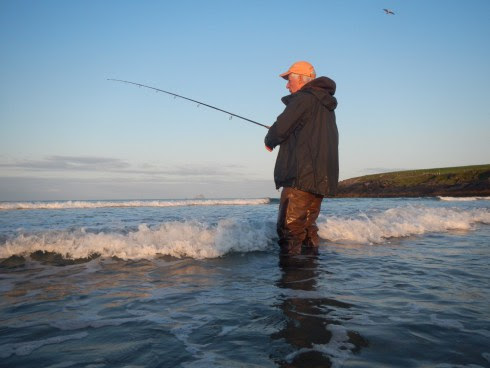
John and his wife Lyn provide wonderful accommodation at the Thatch Cottage set in the stunning surroundings of Ballinskelligs Bay. As well as being a tireless campaigner for Irish bass conservation John also provides a first rate and affordable guiding service for bass, pollack, wrasse, salmon and sea trout. All within a few miles of their cottage just outside Cahersiveen. You can find out more here: http://www.
Unfortunately the savage winter storms which battered the west coasts of both Britain and Ireland had ripped out an awful lot of the weed that the bass like to use as cover. Some Previously productive marks were not producing this year and there was an abundance of floating weed on some beaches that made the fishing difficult to say the least. However, my travelling companion Paul and I were lucky to be fishing with two people who know their areas intimately and were able to put us on fishable areas.
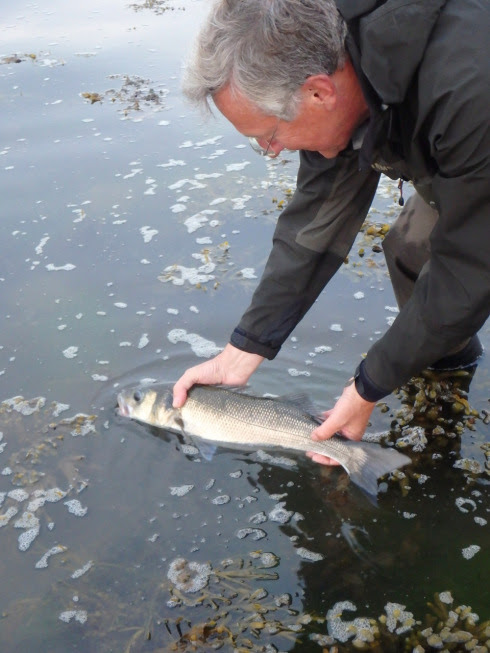
The first morning on the Dingle saw us up at 4am and trying out a new sheltered mark. Our host Richard was first to score with a lovely 4.12 bass on a 12 gm Black Fiiish Minnow. Neither Paul nor I could get a response in the main channel but I did notice some movement in a large patch of bladder wrack that had survived the winter pounding. The guys at Spro had very kindly sent me some of their Komodo shads, possibly the best weedless soft plastic around, which I had packed for precisely this opportunity. Two casts later and the water exploded less than six feet from my rod tip as the Komodo was engulfed by my first Irish bass of the year. Not a huge specimen but a really exciting capture from a new spot.
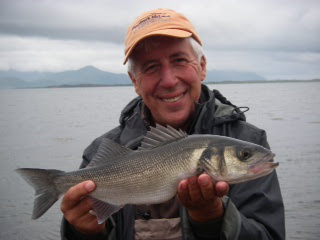
Over at Cahersiveen we initially found the going tough so we asked John to take us out in the bay for pollack fishing. This was great fun and casting towards the rock ledges rather than from them meant that cuts off were largely avoided even though we were hooking into some fish that were just shy of double figures.
The best was saved to the end and our last morning saw us casting into the Atlantic surf from a heavenly cove an hour before the sun came up over the mountain behind us. The fish all came in a magic half hour to a Storm Thunder minnow hurled beyond the second breaker and slow rolled just beneath the surface. The rods just loaded up and the reels screamed as five pounds of angry bass charged through the waves throwing up plumes of silver spray in the half light of an Irish dawn. Just being there, in that place, at that time, with that view was enough to make to make the spirits soar. The fish were a bonus but one that will keep me coming back for more.
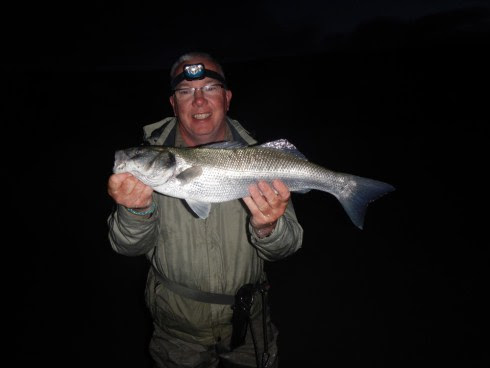
What the Hell ?
There is no reason why the bass fishing back home should not be equal if not better than that to be found in Ireland. And if you can afford a boat, or a boat and a good guide like Austen Goldsmith, http://www.
Here in the UK we are reaping the inevitable consequences of years of unsustainable commercial exploitation which has removed tonnes of juvenile bass from the inshore fishery before they have had a chance to breed. There are no restrictions on the amount of bass that can be taken and the current bass minimum landing size for both commercial and recreational fisherman is a ridiculous 36cms. Yet all the evidence shows that the fish do not reproduce until they reach at least 42cms and sometimes larger. It doesn’t take a genius to recognise that killing immature fish on an industrial scale is a recipe for disaster.
And it is not just recreational anglers who have noticed the decline in bass stocks. The governments own experts at the International Council for the Exploration of the Seas (ICES) have been publishing regular assessments highlighting the increasingly parlous condition of this once plentiful species. Their latest report calls for a staggering 80% reduction in the commercial take and the urgent implementation of a coherent management plan. The Angling Trust and the Bass Anglers Sportsfishing Society (B.A.S.S) have been lobbying furiously for our politicians to heed the warnings and introduce a sustainable minimum landing size along with other conservation measures to enable stocks to recover.
Although we came close in 2007 to achieving a breakthrough the then Fisheries minister, Jonathan Shaw, capitulated to pressure from the commercial sector and overturned the decision of his predecessor, Ben Bradshaw, who had actually signed off the order to increase the bass MLS.
The ICES report published in June of this year illustrates just how short sighted and stupid it was to carry on removing immature fish and to allow the pros to drive bass stocks down to dangerously low levels. They could not have been clearer on the need for urgent action:
‘Recruitment has been declining since the mid-2000s, and has been very poor since 2008. The combination of declining recruitment and increasing (catches) is causing a rapid decline in biomass.’
And…
‘ICES advises that a management plan is urgently needed to develop and implement measures to substantially reduce fishing mortality throughout the range of the stock.’
You can see the full assessment here..
http://www.ices.dk/sites/pub/
Of course none of this should have come as a surprise to the government as ICES has offered this advice before, calling for a 20% reduction in catches in September 2013 and yet no action was taken. We are left wondering if our politicians are waiting for a complete collapse in bass stocks before they will acknowledge that we have a problem.
There was a glimmer of hope in July 2012 when the then Fisheries Minister, Richard Benyon, agreed to order a review of the bass minimum landing size following a joint delegation and presentation from BASS and the Angling Trust.
Together with Ian Misslebrook and Nigel Horsman from B.A.S.S., John Quinlan, Chairman of the Irish Bass Protection Group and Charles Walker MP and George Hollingbery MP, chairman and vice-chairman of the APPG on Angling, we presented Mr Benyon with our paper ‘Bass Stock Management and the minimum landing size’.
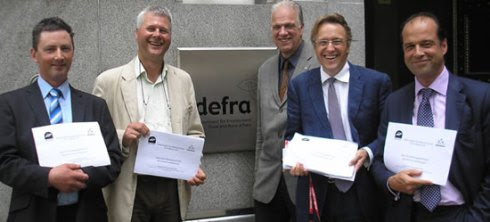
Using the latest data, including Solent Bass Survey figures showing frighteningly low survival rates for young bass for 2008 & 2009, we argued for a new minimum landing size of 48cms to allow for the maximum number of fish to successfully breed before running the risk of harvesting. At this size a corresponding increase in net mesh sizes would also reduce discard levels – something the commercial sector had always claimed would be a consequence of increasing the bass mls.
Mr Benyon heard first hand of the collapse in Irish bass stocks in the late 1980’s and how the introduction of a statutory close season, a two fish bag limit and a minimum landing size has allowed stocks to recover to the point where the recreational bass fishery is now worth over €18 million to the Irish economy. We also highlighted the similar situation that occurred with striped bass in the USA and how a tough management regime coupled with effective conservation measures has led to a remarkable stock recovery and huge economic benefit.
Following last year’s ministerial reshuffle which saw Richard Benyon replaced by George Eustice I wrote to our new minister to see if the bass mls review was still underway. We received the good news that…
“I can confirm the Government’s commitment to review the current MLS in territorial waters.
However, this was somewhat tempered by the caveat that nothing would happen until an interminable EU process had come to a conclusion. This is nonsense in my view as bass are primarily an inshore species, and, as the Irish have shown, there are plenty of measures that the UK can take within the 6 and 12 mile limits that could help limit the alarming decline. The facts are clear, the scientists have provided the evidence, and over many years – so what the hell are our politicians going to do about it?
Whilst the Angling Trust will be ensuring that the plight of our bass is again raised in the House of Commons once Parliament returns, I am worried that with a General Election on the horizon our politicians will try to run away from making any meaningful decisions. Our job must be to remind ‘the greenest government ever’ there is a conservation crisis happening in our inshore waters on their watch and that anglers will be looking for action from those who want our votes.”